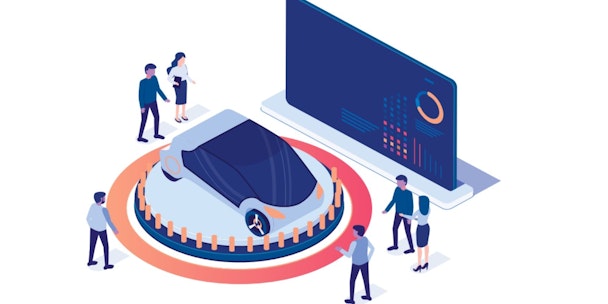How retailers are evolving their location-based targeting
Toyota has been found to have the most visited car dealerships in Australia, with its New South Wales dealerships, seeing maximum visits.

The study also revealed Australians visit an average of just over three car dealerships before they make a purchase decision.
This is according to a new study by Lifesight, a location intelligence company, which surveyed consumers at Australian car dealerships during the month of March 2019.
The study found a strong correlation exists between dealership visits and sales outcomes among the top five most-visited car brands, with the exception of premium European brands Audi and BMW.
In addition, the study also revealed Australians visit an average of just over three car dealerships before they make a purchase decision, with Saturday being Australia’s favourite day of the week to make a trip to a car dealership, with 45% of measured footfall coming through on that day.
The Drum spoke to Alfred Alexander, the director of global marketing at Lifesight, to find how car dealerships and retailers in other industries can use location intelligence to map their consumers' purchase journeys.
What are the different types of footfall measurements that retailers can use?
There are various basic store traffic measurements technologies such as infrared, video, etc. Mobile-based location data using GPS and WiFi store visitation detection technology allows customer tracking via mobile advertiser IDs as the unique persistent ID.
Lifesight collects opted-in consumer data at scale via our SDK embedded in various partner apps and aggregators. We then map this data to points of interest and use a multitude of algorithms to clean the data and use only the most accurate data points.
How accurate should footfall traffic data need to be to use it as a KPI?
Mobile location data that is collected via the device OS (what Grab or Maps uses to position you) has accuracy data points called Horizontal Accuracy and Vertical Accuracy. When this data point is used with the location event and place resolution algorithm, we are able to assign a confidence level to every store visit.
The industry currently uses visitation confidence of anything above 90% confidence to use it as a KPI.
Should retailers need to get involved in the footfall traffic data collection process?
Most retailers have their own standalone foot traffic counter tool. However, this data is only for basic insights into the store traffic. It is not actionable and not deep insight into their customer base. Hence, data collection should be focused on building CRM programs for first-party data collection.
We collect mobile consumer independently and don’t need the retailer to participate.
What should retailers expect from footfall measurements data reporting?
One of the biggest issues that physical store retailers face is that their customer base is not targetable and measurable if they don’t participate in some kind of loyalty program.
This user base is usually only 5% of their entire customer base. We help them measure a larger scale of their own customer base. Location-based measurements also allow retailers to measure the impact of advertising on in-store visits. This is the true value of store footfall measurements.
This is the five key ways:
1. Understand which channels performed better in driving footfall.
2. Understand the Cost per Visit (CPV) metric and analyse the true cost incurred in driving a visit through the door and to gauge the ROI of your ad spend
3. Study the lift in visits as a result of digital campaigns to prove that an ad campaign drove incremental footfall.
4. Benchmark share of footfall vis a vis competition.
5. Understand who their customers are in the real-world and what personas are they.
How will brands know that only true footfall customer traffic is reported?
We use polygon geofences of the point of interest to accurately detect a user’s presence in-store with a certain level of confidence. We then only use the highest store visitation confidence to report. However, as with all sensor-based technologies, it is never 100% true and so there a margin of error to consider, however, the majority of the visit sample data will be true.
How can retailers use location intelligence data to drive footfall traffic to their stores?
Retailers can activate location-based audience data which are mobile audiences segmented based on real-world behaviour. For instance, KFC could target KFC Visitors, McDonalds Visitors, Burger King Visitors and so on to drive the relevant messaging to people who like fast food.
This works especially well for high-value brands like automotive, real estate, travel, luxury items and more where the customer base is highly targeted.
Should retailers need to know more beyond footfall traffic and conversion rates?
Yes absolutely. There is a wealth of data that comes along with footfall measurements as it reveals more about their customer base such as their customer journey, where they live, work and shop, their shopping patterns, their persona, demographics and so on.
What type of relationship should retailers have with their footfall traffic provider?
It should be one with the least resistance to data collection. Many ambitious methods like coupons, QR code scanning etc have failed because of changing consumer behaviour. Data should be collected passively and still be actionable. Retailers should identify solutions that can help them do this and provide them with the scale they need to reach new customers and retain existing ones.
Download the rest of the report here.

